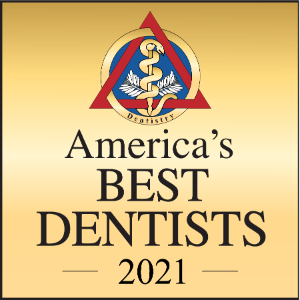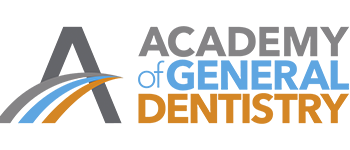Dental emergencies can be both alarming and painful, requiring a swift response. They come in many forms, such as sudden toothaches, lost fillings, or injury-related damages, and they often catch individuals by surprise. To effectively manage these emergencies, it’s key to understand the different types of incidents that can occur and recognize the early warning signs that prompt you to seek professional care immediately. Here’s what you need to know:
The Full Picture of Dental Emergencies
Dental emergencies are urgent health concerns that demand an immediate and informed reaction to prevent long-term consequences. It’s vital to recognize that dental emergencies come in various forms and addressing them promptly can help preserve oral health and prevent further issues.
Dental emergencies can be classified by their origin, either as a result of dental disease or facial trauma. Issues stemming from dental diseases include severe, sudden toothaches and lost fillings, indicative of underlying problems such as decay or infection. Alternatively, emergencies from facial trauma are typically associated with injury-related damages requiring quick action to ensure teeth and surrounding tissues are protected from lasting harm.
The ability to identify the signs of dental emergencies is crucial. Early indicators often involve a degree of oral discomfort, with more severe symptoms manifesting as intense pain, swelling, or physical damage to the teeth. Awareness of these warning signs is important for individuals to take timely steps towards care, whether it means alleviating discomfort at home or seeking immediate professional treatment.
Having a practical knowledge of managing dental emergencies can lessen the impending anxiety and uncertainty one might experience during such events. This entails understanding what temporary measures to take before receiving professional care, like rinsing the mouth with saline solution for a toothache or placing dental wax over broken fillings or braces. Arming oneself with this knowledge can make a significant difference in the health outcome of an emergency situation.
Two Main Types of Dental Emergencies
Recognizing the nature of dental emergencies is the first step in responding effectively. By understanding the two primary types of dental emergencies, infections and injuries, patients can determine the severity of their situation and take appropriate action.
Infections represent one category of dental emergencies, often characterized by severe toothaches that point to underlying issues like abscesses or decay. These require urgent attention to alleviate intense pain and prevent the spread of infection to other areas of the mouth and body. For example, a patient with a throbbing toothache and sensitivity to hot or cold may be experiencing an abscess and should seek dental help immediately.
Injuries are another category encompassing emergencies from accidents causing damage to teeth or oral tissues. This type includes broken, cracked, or knocked-out teeth resulting from impacts during sports or falls. With injuries, immediate care is critical to save damaged teeth, such as preserving a knocked-out tooth in milk or saline solution while en route to the dentist:
- Infection-Based: Severe toothaches indicating abscesses or decay requiring urgent intervention
- Trauma-Related: Broken, cracked, or knocked-out teeth from accidents or impacts
- Quick Assessment: Understanding the type helps determine appropriate immediate response
- Professional Care: Both categories benefit from prompt dental evaluation and treatment
By categorizing dental emergencies, patients are better equipped with the knowledge to handle their specific conditions properly. This structured approach allows for quick self-assessment and a more orderly process in seeking professional dental care.
Warning Signs That Need Immediate Attention
Understanding which symptoms warrant immediate dental attention is essential for addressing dental emergencies promptly. There are specific red flags that should prompt an urgent visit to the dentist to reduce the risk of further dental damage or health complications.
One critical symptom is persistent, severe pain, which could indicate a serious dental problem such as an abscess or infected gum tissue. Such pain typically doesn’t subside with over-the-counter painkillers and requires prompt professional evaluation to treat the underlying cause. For instance, if you have a toothache that worsens over time and is accompanied by fever or swelling, it’s important to contact your dentist right away.
Another alarming sign is uncontrolled bleeding in the mouth that may come from trauma or surgical procedures. If applying pressure with a clean cloth or gauze doesn’t stop the bleeding after several minutes, this indicates a need for an emergency dental visit to prevent excessive blood loss and facilitate healing.
The sudden loosening or complete loss of a tooth is a direct call for emergency care. In the event of a knocked-out tooth, handling it carefully and getting to a dentist as quickly as possible could allow for successful reimplantation. Keeping the tooth moist in milk or saline solution is advisable while seeking prompt dental assistance.
Setting Your Emergency Response Priorities
When a dental emergency strikes, it’s easy to feel overwhelmed—but having a clear understanding of your response priorities can make a big difference. The first few minutes after an injury or the onset of pain are critical for protecting your oral health and preparing for proper treatment. At the office of Dr. Bethaney B. Brenner DMD in Burlington, CT, we want our patients to feel confident in their ability to respond calmly and effectively until professional care is available.
Pain relief is typically the most immediate concern in any dental emergency. Applying a cold compress to the cheek or jaw can help reduce inflammation and numb the area temporarily. Over-the-counter pain relievers may also be used as directed, but it’s important to avoid placing aspirin directly on the gums or teeth, as this can cause irritation. In cases of persistent toothache, gently biting on a clean, damp cloth may also offer short-term comfort while you make arrangements to see a dentist.
Another critical step is managing any bleeding, particularly after trauma to the mouth, gums, or tongue. Use a clean gauze pad to apply gentle, consistent pressure to the bleeding site. This can often stop minor bleeding within minutes. Rinsing your mouth carefully with a mild saline solution can also help cleanse the area and reduce the risk of infection, especially if soft tissues are involved.
Preserving the health of your oral tissues is equally important. If a tooth has been knocked out, try to avoid touching the root. Hold it by the crown and, if possible, place it back into the socket gently. If reinsertion isn’t possible, store the tooth in a glass of milk to keep the cells alive until you reach the dental office. This small action can increase the chances of saving the tooth.
- Pain Management: Cold compresses and appropriate pain relievers offer short-term relief
- Bleeding Control: Gentle pressure with gauze and rinsing with saline solution help stop bleeding
- Tissue Preservation: Proper handling of dislodged teeth and immediate storage help maintain viability
- Professional Preparation: Taking the right first steps ensures more effective treatment at the dental office
These simple yet effective emergency priorities can help protect your smile and minimize long-term damage. For injuries involving soft tissues, remember to rinse gently with saline to support healing and keep the area clean.
Separating Myths from Reality
In managing dental health, it’s crucial to discern situations that require immediate attention from those that don’t. Understanding this difference ensures proper care and prevents unnecessary panic or treatment delays.
Some individuals may believe that all tooth pain requires urgent treatment. However, this isn’t always the case. Transient, mild discomfort, such as that which occurs with temperature sensitivity or minor toothache, may not need emergency care and can often be managed until a routine dental visit. For instance, a short-lived pain from an ice-cold drink doesn’t typically require emergency attention.
Conversely, persistent, severe pain usually indicates a more significant dental issue that should be addressed promptly. Such pain might stem from a deep cavity, an abscess, or a cracked tooth and ignoring it could lead to serious complications, including increased infection and potential tooth loss. If pain persists for more than a day and is accompanied by swelling or fever, it’s time to seek professional intervention.
Another common misconception is the seriousness of bleeding gums. While sporadic, slight bleeding might not be an emergency, continuous or excessive bleeding suggests a more urgent problem. It might point to advanced gum disease or trauma and warrants a visit to the dentist to prevent potential loss of teeth and the worsening of oral health conditions.
Prevention: Your First Line of Defense
Establishing a routine of preventive care is the cornerstone of reducing the incidence of dental emergencies. Through daily, disciplined practices, individuals can fortify their oral health and lessen the likelihood of unexpected dental crises.
Maintaining consistent oral hygiene is the first line of defense against emergencies. Regular brushing and flossing clear away food particles and plaque that can lead to tooth decay, gum disease, and other painful conditions that might require urgent dental visits. For instance, brushing at least twice a day with fluoride toothpaste and flossing once can help prevent the development of cavities that could cause severe toothaches.
Using protective gear is another crucial preventive strategy, especially for those engaging in sports or high-impact physical activities. Wearing mouthguards can absorb shock and provide a barrier against injuries, ultimately preventing tooth fractures or avulsions that require immediate emergency care. For example, a custom-fitted mouthguard can offer significant protection during contact sports like football or boxing.
Adhering to a schedule of regular dental examinations contributes to the early discovery and treatment of issues before they escalate into emergencies. Routine check-ups allow dentists to identify and address minor problems, such as small cavities or the beginning stages of gum disease, before they grow into painful and problematic conditions that demand urgent attention.
Immediate Actions You Can Take
In a dental emergency, knowing the right immediate actions to take is vital. Swift and appropriate measures can alleviate discomfort and prevent further damage while one seeks professional dental care.
One effective initial step is to apply a cold compress to the affected area to minimize swelling and numb discomfort. For instance, if one sustains a blow to the mouth during a sports activity and swelling occurs, placing an ice pack wrapped in a cloth on the cheek can provide quick relief and reduce inflammation.
Another temporary measure is to rinse with saltwater, which can cleanse oral wounds and soothe irritation. In cases where a tooth is knocked out or a crown comes loose, rinsing with a mild saline solution can help clear away debris and bacteria, offering pain relief and lowering the risk of infection until professional treatment is available:
- Cold Compress Application: Ice packs reduce swelling and numb pain from trauma
- Saltwater Rinses: Mild saline solutions cleanse wounds and soothe irritation
- Debris Removal: Gentle cleaning helps prevent infection while awaiting treatment
- Pain Relief: Immediate measures provide comfort until professional care arrives
Understanding the importance of these steps ensures preparedness to handle a dental crisis effectively. Even though they don’t replace the need for a dentist’s expertise, taking the right immediate actions can be crucial in preserving oral structures and health.
Why Professional Care Is Essential
Following immediate self-care during a dental emergency, consulting a dental professional is crucial. A dentist’s comprehensive assessment and subsequent care are essential steps in effectively resolving the emergency and preventing further oral health issues.
The complexity of dental emergencies often requires the specialized knowledge and skills of a dentist to properly diagnose and treat the condition. Whether it’s a severe toothache, a broken tooth, or a lost filling, a dentist has the tools and experience to address these problems thoroughly. For example, they might need to perform an X-ray to assess the extent of the damage or provide a root canal treatment to save an infected tooth.
Early professional evaluation is key to halting the progression of any dental issues that could lead to serious complications. A dentist not only provides immediate relief from pain but also creates a treatment plan to restore oral health. Their intervention can prevent the spread of infection, loss of teeth, and longer-term repercussions that might arise from inadequate or delayed treatment.
Securing the services of a professional dentist ensures the initiation of the healing process in a timely manner and helps achieve the best outcomes for dental health. Trusting their expertise allows one to navigate the aftermath of a dental emergency with the assurance that their oral well-being is in capable hands.
When to Seek Emergency Care
In times of oral distress, it’s important to understand situations that mandate an urgent dental consultation. Timeliness in seeking treatment is often a determinant of the severity and outcome of dental issues.
Severe pain that doesn’t subside with home remedies or over-the-counter medication signals the need for a dentist’s evaluation. Whether due to deep decay, a damaged tooth, or an emerging infection, pain that becomes increasingly unbearable requires swift professional intervention. For example, intense pain from a toothache that disrupts sleep or daily activities is a clear indicator that a visit to the dentist’s office should not be postponed.
Any visible damage to teeth or gums, such as cracks, chips, or significant bleeding, requires a visit to the dentist. These conditions can lead to further deterioration if not promptly treated. A broken tooth fragment or a deep cut on the gums are cases in point that could lead to more serious complications if left unattended.
If there has been trauma to the face or mouth, such as accidents from sports or falls, immediate attention from a dentist is essential. Trauma can cause not immediately apparent injuries that could have lingering effects on oral health. Thus, after incidents with potential dental impacts, a dental examination is advisable even if no immediate pain or damage is noticed.
Emergency Resources and Support
Access to the right resources is critical when managing a dental emergency. Dr. Brenner’s clinic offers comprehensive support to help patients respond appropriately during a dental crisis, ensuring better outcomes and relieving anxiety.
Detailed instructions for immediate care are available from Dr. Brenner’s clinic, guiding patients on how to handle acute oral health issues until they can receive professional treatment. For example, these instructions may advise on steps to minimize the damage from a knocked-out tooth, like keeping it moist, which could preserve the tooth for possible reinsertion by a dentist.
The clinic provides a recommended list of supplies for a home dental emergency kit. Such a kit might include items like sterile gauze, dental cement, and pain relievers, preparing individuals to address common dental emergencies effectively before making it to the dental office:
- Immediate Care Instructions: Step-by-step guidance for handling acute oral health issues
- Emergency Kit Supplies: Recommended items like gauze, dental cement, and pain relievers
- Regular Updates: Latest best practices and developments in emergency dental care
- Patient Education: Ongoing communication keeps patients informed and prepared
Regular updates from Dr. Brenner’s clinic can also inform patients on the latest best practices for managing urgent oral health situations. These communications are designed to keep patients abreast of new developments and remind them of the steps to take when dental emergencies arise.
Your Emergency Response Success Plan
In managing dental emergencies, the approach taken can have far-reaching effects on one’s oral health. It’s essential to act fast and follow reliable advice to minimize damage and optimize recovery.
Quick action during a dental emergency is crucial. When faced with a sudden oral health issue, the immediate steps mentioned throughout this guide, such as applying a cold compress to reduce swelling or rinsing with saltwater, lay the groundwork in controlling the situation before reaching professional help. The prompt use of these techniques can relieve pain, limit damage, and stabilize conditions ahead of dental treatment.
Understanding immediate response actions is just part of the journey; follow-up care from a dental professional plays an essential role in fully restoring oral health. Scheduling a visit to the dentist after an emergency ensures comprehensive treatment and further prevention strategies, which are vital to preventing recurrence and maintaining a healthy mouth long-term.
At Dr. Bethaney Brenner’s practice in Burlington, CT, we understand that dental emergencies can be frightening experiences, but with the right knowledge and quick action, you can minimize damage and protect your oral health until professional care is available. The goal of this guide is to impart knowledge that empowers individuals to manage dental emergencies effectively, and by remembering to act with both speed and informed choices, you stand the best chance of safeguarding not only your oral health but your overall quality of life as well.
Ready to be prepared for any dental emergency and ensure you have the knowledge and resources needed to respond effectively? Contact Dr. Bethaney Brenner’s practice today to learn how our comprehensive approach to emergency dental care combines patient education, immediate response protocols, and professional expertise to help you handle dental emergencies confidently and achieve the best possible outcomes for your oral health.







